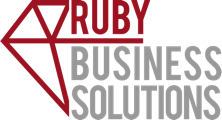Optimizing Cash Flow: Mastering Accounts Receivable for Canadian Small Businesses
Mastering Accounts Receivable (AR) is crucial for the financial health and success of Canadian small businesses. Effective AR management goes beyond just collecting payments; it’s about maintaining a healthy cash flow, building strong client relationships, and fostering sustainable growth.
Navigating AR can be challenging, with unique market demands and Canadian financial nuances. This blog aims to simplify AR management for small businesses in Canada, offering practical tips to streamline your AR processes. From creating efficient invoicing systems to leveraging technology and handling late payments, we’ll guide you through essential strategies to enhance your financial operations.
Whether you’re a budding entrepreneur or an experienced business owner, these insights will help you master your accounts receivable, ensuring your business thrives in the Canadian market.
Section 1: Fundamentals of Accounts Receivable for Small Businesses
1.1 Definition and Importance
Accounts Receivable (AR) represents the credit your Canadian small business extends to customers. It’s money owed for goods or services delivered but not immediately paid for. Efficient management of AR is crucial for maintaining a healthy cash flow and overall financial stability.
1.2 Role in Cash Flow Management
Effective AR management ensures a steady cash inflow, balancing the credit extended to customers with timely payment collection. This balance is vital for smooth business operations and growth.
1.3 Impact on Business Growth and Stability
Proper AR management leads to improved cash flow, minimized financial risks, and stronger customer relationships. It also aids in making informed decisions for your business’s future.
In essence, AR is more than an accounting term; it’s a significant aspect of your business’s financial health, requiring strategic attention and management.
Section 2: Efficient Invoice Management for Small Businesses
Effective invoice management is essential for maintaining a healthy accounts receivable process. Here are the key practices for small businesses in Canada:
2.1 Crafting Clear Invoices
- Include all necessary details such as dates, amounts, and descriptions.
- Use a clear, readable format to minimize confusion.
2.2 Timeliness in Invoicing
- Issue invoices immediately after service or product delivery.
- Maintain a regular invoicing schedule for recurring services.
2.3 Streamlining Invoice Tracking
- Use a system (software or spreadsheet) to track sent, received, and due invoices.
- Establish a follow-up procedure for overdue invoices.
2.4 Embracing Digital Tools
- Implement accounting software for automated invoicing and reminders.
- Transition to digital invoices for efficiency and trackability.
2.5 Legal Compliance
- Ensure invoices meet Canadian legal requirements, including tax considerations.
- Securely handle customer information to maintain privacy.
By adopting these strategies, Canadian small businesses can enhance their invoicing process, leading to more effective accounts receivable management.
Section 3: Setting Optimal Payment Terms
Effective payment terms are crucial for streamlined accounts receivable management. Here’s how Canadian small businesses can optimize these terms:
3.1 Customizing Payment Terms
- Tailor terms to fit your business and client needs.
- Ensure clarity and simplicity in the payment terms.
3.2 Defining Payment Periods
- Align with industry norms, typically ranging from net 15 to net 60 days.
- Consider your business’s cash flow when determining payment periods.
3.3 Encouraging Prompt Payments
- Offer incentives like early payment discounts.
- Implement loyalty programs for consistent clients.
3.4 Managing Late Payments
- Establish clear late payment policies, including potential late fees.
- Engage in proactive communication with clients who have overdue payments.
3.5 Diversifying Payment Methods
- Provide multiple payment options for convenience.
- Utilize popular and secure payment technologies in Canada.
By setting effective payment terms, small businesses can improve cash flow and maintain healthy client relationships.
Section 4: Leveraging Technology in Accounts Receivable
Incorporating technology is a game-changer for managing accounts receivable in Canadian small businesses. Here’s how to make the most of it:
4.1 Selecting Accounting Software
- Choose user-friendly software tailored to Canadian tax regulations.
- Opt for features like automatic invoice generation and payment tracking.
4.2 Digital Invoicing and Payments
- Shift to electronic invoicing for faster processing and better tracking.
- Offer online payment options like e-transfers and credit card payments.
4.3 Utilizing Data Analytics
- Analyze customer payment trends to forecast cash flow.
- Generate customized reports for a comprehensive view of AR status.
4.4 Ensuring Security and Compliance
- Prioritize solutions that adhere to Canadian data protection laws.
- Keep software updated to stay compliant with financial regulations.
4.5 Keeping Up with Technology
- Stay informed about new financial technologies and tools.
- Regularly review and update technology based on feedback.
By embracing technology, small businesses in Canada can streamline their accounts receivable processes, enhancing efficiency, accuracy, and customer satisfaction.
Section 5: Handling Delinquent Accounts
Effectively managing late payments is critical for maintaining a healthy cash flow in small businesses. Here’s a brief guide for Canadian businesses on dealing with delinquent accounts:
5.1 Establishing a Clear Collection Policy
- Develop a formal policy for handling overdue payments, ensuring it’s communicated clearly to clients at the outset.
5.2 Proactive Communication
- Reach out to clients with overdue payments promptly, seeking to understand their situation and finding mutually agreeable solutions.
5.3 Legal Considerations
- Be aware of legal regulations governing debt collection in Canada to ensure your practices are compliant.
5.4 Seeking Professional Assistance
- Consider hiring a collection agency or seeking legal advice for persistently delinquent accounts, especially when internal efforts have been exhausted.
By implementing these strategies, small businesses can effectively manage late payments, preserving both their financial stability and client relationships.
Section 6: Regular Review and Analysis of Accounts Receivable
For Canadian small businesses, routinely assessing accounts receivable is crucial for financial health. Here’s how to approach this effectively:
6.1 Importance of Regular Reviews
- Conduct frequent reviews of your AR to monitor payment statuses and identify any issues early.
6.2 Key Metrics to Track
- Focus on metrics like average days to pay, aging reports, and percentage of overdue accounts.
6.3 Adjusting Strategies Based on Analysis
- Use insights from your reviews to refine your AR processes, addressing any recurring challenges or inefficiencies.
Regularly analyzing and adjusting your accounts receivable approach helps maintain a stable and healthy cash flow for your business.
In navigating the complexities of accounts receivable management, remember that you’re not alone. Our team at [Your Business Name] specializes in providing tailored solutions to help Canadian small businesses master their financial processes. From optimizing invoice systems to implementing cutting-edge technology, we offer personalized support and expertise every step of the way. Our commitment to helping you manage your accounts receivable efficiently means you can focus more on growing your business and less on financial hurdles. Reach out to us to discover how we can help turn these strategies into a successful financial reality for your business.







